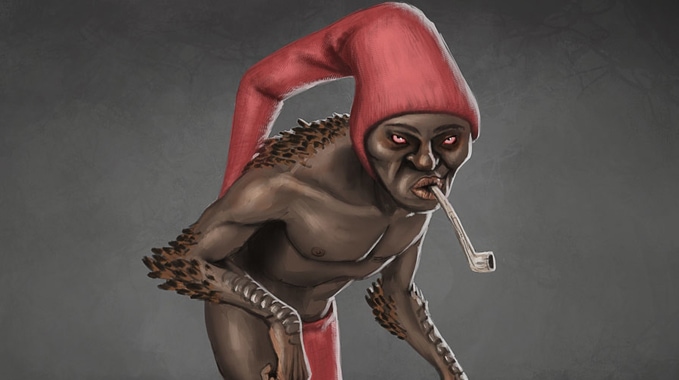Brazilians are celebrating Halloween more than ever. Although the tradition has never been part of the Brazilian culture, in recent decades there has been a kind of “cultural embedment” of Halloween in Brazil. On October 31st, children go to school wearing scaring costumes, adults host spooky decorated parties, and neighbors distribute candy.
The Brazilian population came into contact with Halloween through films, TV series and other foreign cultural products, mainly from the United States. Today, in the era  of social media, the search for the “American Way of life” has been even more evident.
of social media, the search for the “American Way of life” has been even more evident.
October 31st Is Saci-Pererê Day In Brazil
Halloween has no relationship with Brazilian traditions and cultural formation and, for this reason, in 2003, a bill was introduced in the Brazilian Congress to make October 31st the official day to celebrate Saci-Pererê – one of the best-know characters in national folklore. According to legislators behind the proposal, there was a perception that more and more primary schools were celebrating Halloween in the North American model to the detriment of the very rich Brazilian folklore; so why not promoting a reflection on the role of national culture?
In 2004, the date was made official in the State of São Paulo and, in 2010, in the whole country. Since then, The Saci-pererê Day has served as an incentive for Brazilians to learn about and value their culture.
But who is Saci-Pererê?
Saci-Pererê is a mischievous one-legged boy who smokes a pipe and has a red hood that gives him magical powers. He is said to live in the forest, where he enjoys playing tricks on people and animals. He is known for stealing horses, confusing travelers, and making animals behave strangely. He is also said to be able to control the wind, and he is often depicted riding a whirlwind.
Despite his mischievous nature, Saci-Pererê is not considered to be a malicious creature. In fact, he is sometimes seen as a protector of the forest and its inhabitants. He is also said to be able to grant wishes to those who are kind to him.
There are many different stories about Saci-Pererê, and his origins are somewhat murky. Some believe that he is a character from indigenous Brazilian mythology, while others believe that he was created by African slaves who were brought to Brazil.
One of the most popular stories about Saci-Pererê tells how he lost his leg. According to the story, Saci-Pererê was a skilled capoeira fighter. One day, he was challenged to a fight by a man who was said to be the devil. Saci-Pererê lost the fight, and the devil cut off his leg.
Despite losing his leg, Saci-Pererê continued to play tricks on people and animals. He  is said to be immortal, and he is still believed to live in the forests of Brazil today.
is said to be immortal, and he is still believed to live in the forests of Brazil today.
What made Saci-Pererê become so famous?
In 1918, Monteiro Lobato published a book called Saci-Pererê: Resultado de um Inquérito (Saci-Pererê: The result from an Inquiry) in which he presented a compilation of Sacis he gathered from all over the country by mail. There were many variations and descriptions.
He was so fond of Saci-Pererê that he included Saci as a character in Sítio do Pica-Pau Amarelo (The Yellow Woodpecker Farm) released in 1920, among other Brazilian folklore characters.
Although Saci-Pererê was not one of the main protagonists of the chronicles, he played a special role causing mischief, playing pranks, and more.
Saci-Pererê is an important part of Brazilian culture. He is a reminder of the country’s rich and diverse heritage. He is also a symbol of the Brazilian people’s sense of humor and their ability to overcome challenges.



